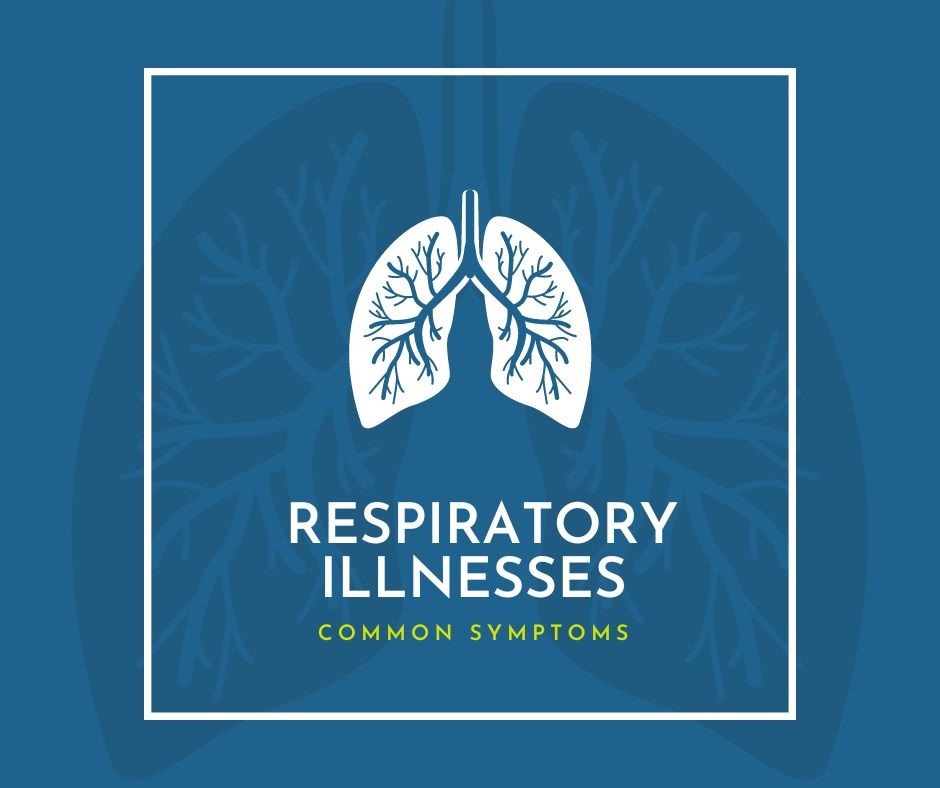We’ve all been there before. Yesterday, you felt fine but today you find yourself not feeling well. You’re tired, achy, coughing, have a sore throat and a fever. You start to look up your symptoms and find out that the flu and COVID-19 have very similar symptoms; so how do you tell if you caught one of these illnesses? The Centers for Disease Control and Prevention (CDC) states that it’s not possible to tell the difference between the flu and COVID-19 by the symptoms alone because they have some of the same signs and symptoms. Specific testing is needed to tell what the illness is and to confirm diagnosis. However, even though there are numerous similarities between the flu and COVID-19, there are also specific differences to keep in mind. Continue reading to explore the similarities and differences between the flu and COVID-19.
Influenza, commonly known as the flu, and COVID-19 are both respiratory illnesses, but COVID-19 is caused by infection with a coronavirus (SARS-CoV-2) while the flu is caused by infection with an influenza virus. The flu is typically seasonal and more common during the Fall and Winter, but COVID-19 is common all year long.
Common Symptoms
Both COVID-19 and flu can have varying degrees of symptoms, ranging from no symptoms (asymptomatic) to severe symptoms. Common symptoms that COVID-19 and flu share include:
- Fever or feeling feverish/having chills (Not everyone with flu will have a fever.)
- Cough
- Shortness of breath or difficulty breathing
- Fatigue (tiredness)
- Sore throat
- Runny or stuffy nose
- Muscle pain or body aches
- Headache
- Vomiting
- Diarrhea (more frequent in children with flu, but can occur in any age with COVID-19)
- Change in or loss of taste or smell, although this is more frequent with COVID-19.
Exposure and infection
For both COVID-19 and flu, one or more days can pass from when a person becomes infected to when they start to experience symptoms of illness. Typically, a person may experience symptoms anywhere from one to four days after infection from the flu. Alternatively, a person may experience symptoms anywhere from two to five days, and up to 14 days after infection from COVID-19. It is possible to be infected with the virus that causes COVID-19 or the influenza virus that causes the flu without experiencing any symptoms.
Contagious timeframe
People with influenza virus infection are potentially contagious for about one day before they show symptoms. Older children and adults with the flu are most contagious during the first 3 days of their illness, but some people might remain contagious for slightly longer periods. On the other hand, people can begin spreading the virus that causes COVID-19 two or three days before their symptoms begin. Infectiousness for COVID-19 peaks one day before their symptoms begin. On average, people are considered contagious for about eight days after their symptoms began from COVID-19.
Spreading
Both COVID-19 and the flu can spread from person to person between people who are near or in close contact with one another. Both are spread mainly by large and small particles containing the virus. These particles are expelled when people with the illness (COVID-19 or flu) cough, sneeze, or talk. After these particles are expelled, they can land in the mouths or noses of people who are nearby and possibly be inhaled into their respiratory tract. In some circumstances, such as indoor settings with poor ventilation, small particles containing virus might be spread longer distances and cause infections.
Most COVID-19 and flu viruses spread is by inhalation of large and small droplets; however, it may be possible that a person can get infected by touching another person (for example, shaking hands with someone who has the virus on their hands), or by touching a surface or object that has virus on it, and then touching their own mouth, nose, or eyes.
Since COVID-19 is generally more contagious, there have been more observed COVID-19 superspreading events than flu.
Complications
Both COVID-19 and flu can result in complications, including:
- Pneumonia
- Respiratory failure
- Acute respiratory distress syndrome (fluid in the lungs)
- Sepsis (a life-threatening illness caused by the body’s extreme response to an infection)
- Cardiac injury (for example, heart attacks and stroke)
- Multiple-organ failure (respiratory failure, kidney failure, shock)
- Worsening of chronic medical conditions (involving the lungs, heart, or nervous system or diabetes)
- Inflammation of the heart, brain, or muscle tissues
- Secondary infections (bacterial or fungal infections that can occur in people with flu or COVID-19)
Most people who get flu will recover on their own in a few days to two weeks, but some people will experience severe complications, requiring hospitalization. Secondary bacterial infections are more common with influenza than with COVID-19.
Additional complications associated with COVID-19 can include:
- Blood clots in the veins and arteries of the lungs, heart, legs or brain
- Multisystem Inflammatory Syndrome in Children (MIS-C) and in Adults (MIS-A)
Approved treatments
The FDA has approved prescription influenza antiviral drugs to treat flu. For COVID-19 treatment options, the National Institutes of Health (NIH) has developed a guide with detailed information. This guide includes antiviral treatment for non-hospitalized people at increased risk for severe COVID-19 and antiviral treatment for people hospitalized with severe COVID-19.
Vaccine
Vaccines for COVID-19 and flu are approved or authorized for emergency use (EUA) by the Food and Drug Administration (FDA). There are multiple FDA-licensed influenza vaccines produced annually to protect against the three flu viruses that scientists expect will circulate during the upcoming season. Likewise, there are multiple COVID-19 vaccines that are authorized or approved for use in the United States to help prevent COVID-19.
If you or someone you know gets COVID-19 or the flu, they should get treatment early to reduce the risk of getting very sick.
This article is made possible in part by the Washington State Department of Health through a grant from the Centers for Disease Control and Prevention.
Resources
Similarities and Differences between Flu and COVID-19 | CDC

